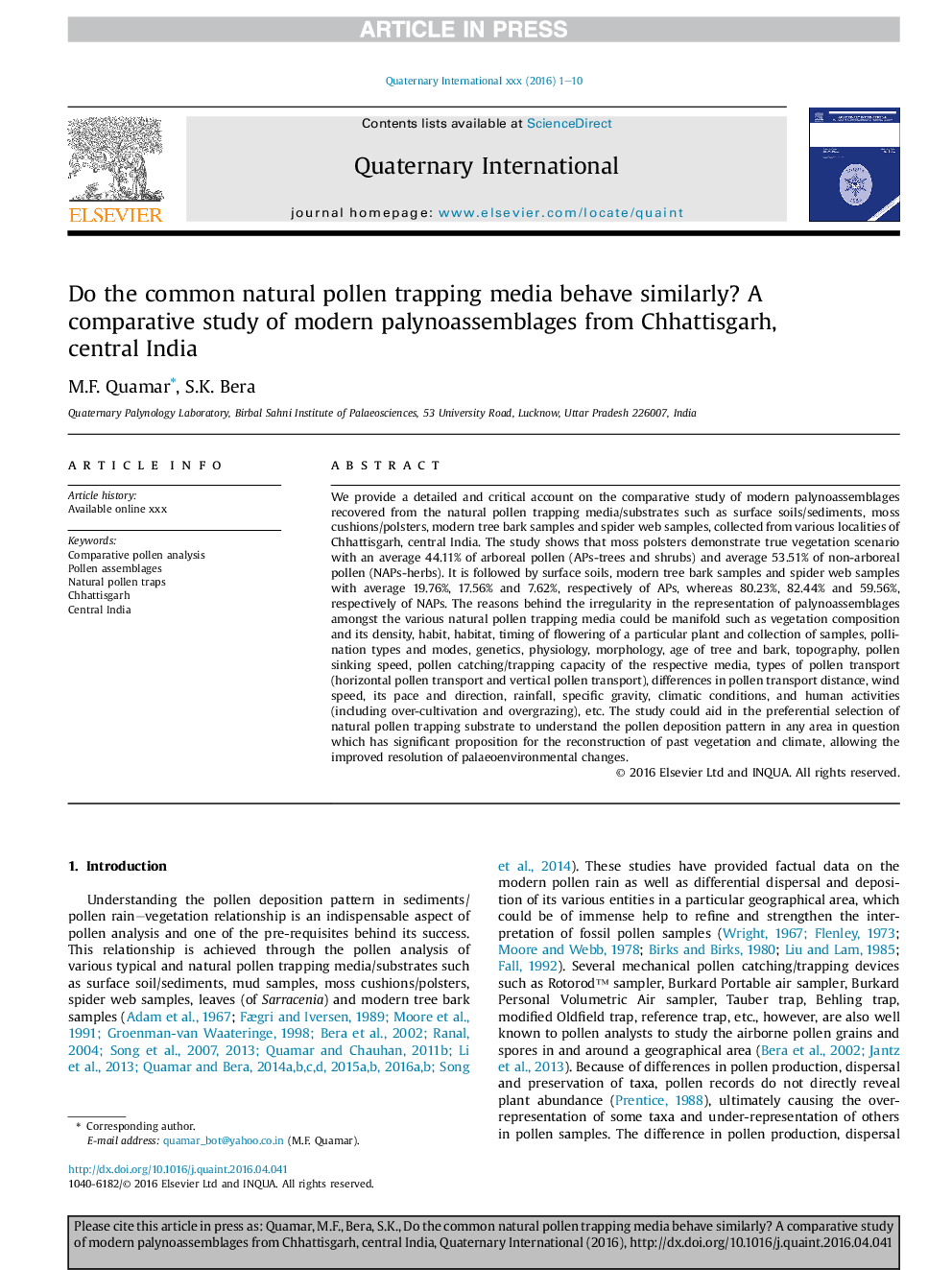| Article ID | Journal | Published Year | Pages | File Type |
|---|---|---|---|---|
| 5113400 | Quaternary International | 2017 | 10 Pages |
Abstract
We provide a detailed and critical account on the comparative study of modern palynoassemblages recovered from the natural pollen trapping media/substrates such as surface soils/sediments, moss cushions/polsters, modern tree bark samples and spider web samples, collected from various localities of Chhattisgarh, central India. The study shows that moss polsters demonstrate true vegetation scenario with an average 44.11% of arboreal pollen (APs-trees and shrubs) and average 53.51% of non-arboreal pollen (NAPs-herbs). It is followed by surface soils, modern tree bark samples and spider web samples with average 19.76%, 17.56% and 7.62%, respectively of APs, whereas 80.23%, 82.44% and 59.56%, respectively of NAPs. The reasons behind the irregularity in the representation of palynoassemblages amongst the various natural pollen trapping media could be manifold such as vegetation composition and its density, habit, habitat, timing of flowering of a particular plant and collection of samples, pollination types and modes, genetics, physiology, morphology, age of tree and bark, topography, pollen sinking speed, pollen catching/trapping capacity of the respective media, types of pollen transport (horizontal pollen transport and vertical pollen transport), differences in pollen transport distance, wind speed, its pace and direction, rainfall, specific gravity, climatic conditions, and human activities (including over-cultivation and overgrazing), etc. The study could aid in the preferential selection of natural pollen trapping substrate to understand the pollen deposition pattern in any area in question which has significant proposition for the reconstruction of past vegetation and climate, allowing the improved resolution of palaeoenvironmental changes.
Keywords
Related Topics
Physical Sciences and Engineering
Earth and Planetary Sciences
Geology
Authors
M.F. Quamar, S.K. Bera,
